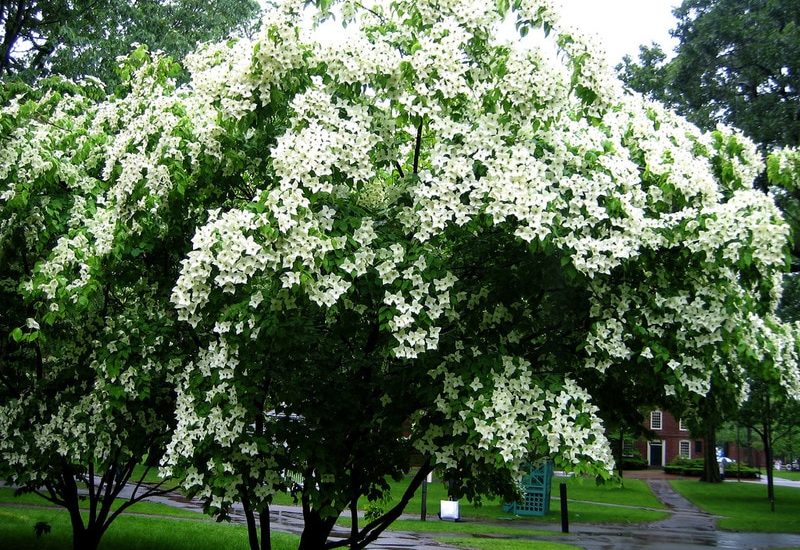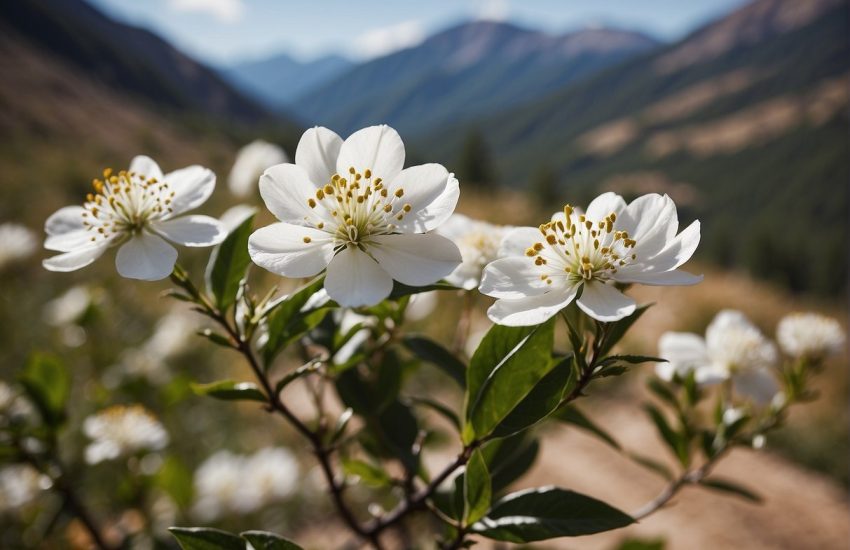Flowering Trees in Delaware: A Guide to the Best Species for Your Garden
Delaware is a state known for its natural beauty and diverse flora. Among the many types of trees that can be found in the state, flowering trees are some of the most striking and beautiful. These trees are known for their vibrant blooms, which can range from delicate pastels to bold, bright hues.

One of the most popular flowering trees in Delaware is the dogwood. This tree is native to the region and can be found in gardens and parks throughout the state. Dogwoods are known for their delicate pink or white flowers, which bloom in the spring and add a touch of beauty to any landscape.
Another popular flowering tree in Delaware is the redbud. This tree is also native to the region and is easily recognizable by its bright pink or purple blooms, which appear in the early spring. Like the dogwood, the redbud is a popular choice for gardens and parks, and can be seen throughout the state.
Native Flowering Trees of Delaware
Historical Significance and Native Species
Delaware is home to a variety of native flowering trees that have played an important role in the state’s history and ecosystem. The state tree of Delaware is the American Holly (Ilex opaca), which is known for its bright red berries that provide food for birds during the winter months. Other native species include the Flowering Dogwood (Cornus florida), Redbud (Cercis canadensis), Serviceberry (Amelanchier canadensis), and Tulip Tree (Liriodendron tulipifera).
The Flowering Dogwood is a popular ornamental tree that produces delicate pink or white flowers in the spring. It has been used for centuries by Native Americans for medicinal purposes, as well as for making tools and utensils. The Redbud, also known as the Judas Tree, is named after the biblical figure who betrayed Jesus. It produces small, pinkish-purple flowers in early spring before the leaves emerge. The Serviceberry, also called the Juneberry, produces clusters of white flowers in the spring and edible berries in the summer. The Tulip Tree, also known as the Yellow Poplar, produces large, tulip-shaped flowers in the spring and is one of the tallest trees in North America.
Benefits to Local Ecosystem
Native flowering trees provide numerous benefits to the local ecosystem. They provide food and habitat for a variety of wildlife, including birds, insects, and mammals. They also help to improve air quality by filtering pollutants and producing oxygen. In addition, they can help to reduce erosion and improve soil quality by providing shade and preventing soil erosion.
By planting native species, individuals can help to preserve Delaware’s natural heritage and support the local ecosystem. Native trees are well-adapted to the local climate and soil conditions, making them easier to maintain and more resistant to pests and diseases. They also require less water and fertilizer than non-native species, making them a more sustainable choice for landscaping and gardening.
Planting and Maintenance

Flowering trees are an excellent addition to any landscape, and Delaware has a variety of options to choose from. However, planting and maintenance are crucial to ensure the health and longevity of these trees. Here are some tips for planting and maintaining flowering trees in Delaware.
Soil and Water Requirements
Before planting a flowering tree, it’s essential to consider the soil and water requirements. Most flowering trees prefer well-drained soil and require adequate moisture to thrive. It’s recommended to plant trees in early spring when the soil is workable, and the tree has time to establish its roots before the hot summer months.
When planting, loosen the soil around the planting hole and mix in organic matter such as compost or peat moss. This will help improve soil drainage and provide nutrients for the tree. After planting, water the tree thoroughly and continue to water it regularly, especially during the first year of growth.
Pruning and Care for Health
Proper pruning and care are essential to ensure the health and longevity of flowering trees. Prune trees in late winter or early spring before new growth begins. Remove any dead, damaged, or diseased branches to promote healthy growth and prevent the spread of disease.
It’s also essential to maintain a low-maintenance approach to care for flowering trees. Avoid over-fertilizing, as this can lead to excessive growth and weak branches. Instead, use a slow-release fertilizer in early spring to provide the tree with the necessary nutrients.
In conclusion, planting and maintaining flowering trees in Delaware requires careful consideration of soil and water requirements, as well as proper pruning and care. By following these tips, homeowners can enjoy the beauty and benefits of flowering trees for years to come.
Flowering Trees and Wildlife

Flowering trees not only enhance the beauty of Delaware’s landscape but also provide a vital source of food and shelter for the state’s diverse wildlife. From birds to butterflies, bees to other pollinators, flowering trees play an integral role in supporting the local ecosystem.
Attracting Birds and Butterflies
Delaware’s flowering trees attract a variety of birds and butterflies, providing them with food and shelter. Some of the most popular flowering trees for birds and butterflies include the Eastern Redbud, Dogwood, and Cherry Blossom. These trees produce pink or white flowers that are not only beautiful to look at but also provide nectar for birds and butterflies.
Supporting Bees and Pollinators
Flowering trees also support bees and other pollinators, which are essential for the reproduction of many plant species. Trees such as the Crabapple and the Red Maple produce fragrant flowers that attract bees and other pollinators. In addition, some flowering trees such as the Serviceberry produce red berries that provide food for birds and other wildlife.
Overall, flowering trees are an important part of Delaware’s ecosystem, providing food and shelter for a variety of wildlife. By planting flowering trees in their yards and communities, residents can help support the state’s wildlife and promote a healthy ecosystem.
Choosing the Right Tree for Your Location

When it comes to choosing a flowering tree for your location in Delaware, there are a few things to consider to ensure that the tree thrives. It’s important to choose the right tree that is suitable for your area’s climate, soil, and space. Here are some considerations to keep in mind when selecting a flowering tree for your garden or property.
Considerations for Urban Areas
If you’re living in an urban area like Wilmington or Dover, you’ll want to choose a tree that can tolerate pollution, compacted soil, and limited space. Some good options for urban areas include dogwood, redbud, and cherry trees. These trees are also great for adding color and beauty to your surroundings.
Best Practices for Rural Planting
For homeowners in rural areas such as Kent, Bridgeville, and Greenville, there are more options available for planting trees. However, it’s important to choose a tree that is suitable for your planting zone and soil type. Some popular flowering trees in Delaware include magnolia, crabapple, and flowering dogwood trees. These trees are great for providing shade and beauty to your property.
When planting a tree, it’s important to follow best practices to ensure its success. Make sure to plant the tree at the right depth and water it regularly during the first few years. Additionally, consider planting the tree away from power lines and other structures to avoid potential damage.
Whether you’re a seasoned gardener or new to planting trees, choosing the right tree for your location is crucial for its success. By considering your location, planting zone, and tree type, you can enjoy a beautiful flowering tree for years to come.


